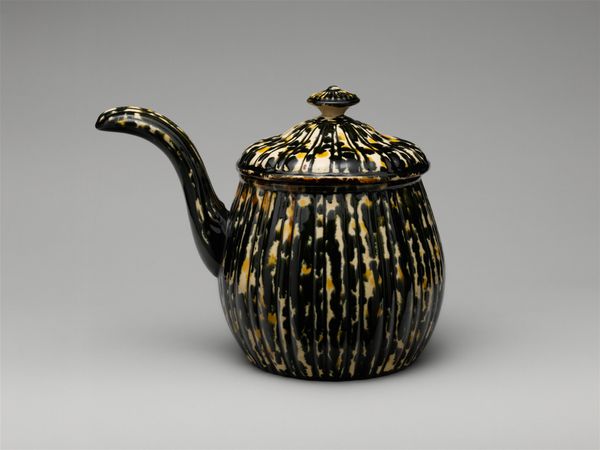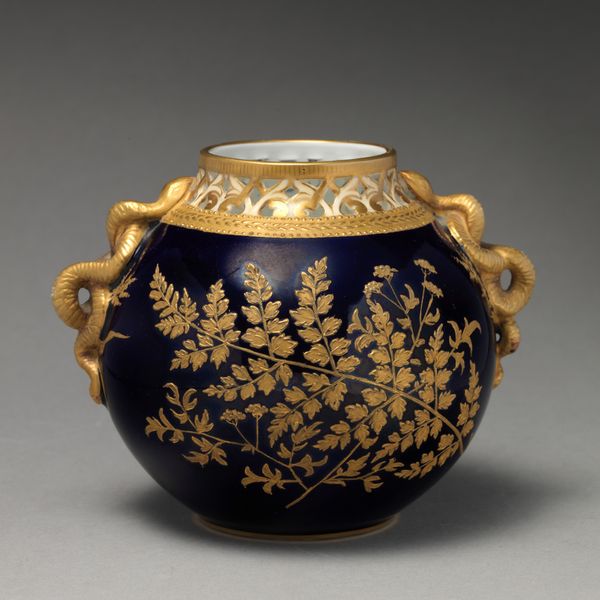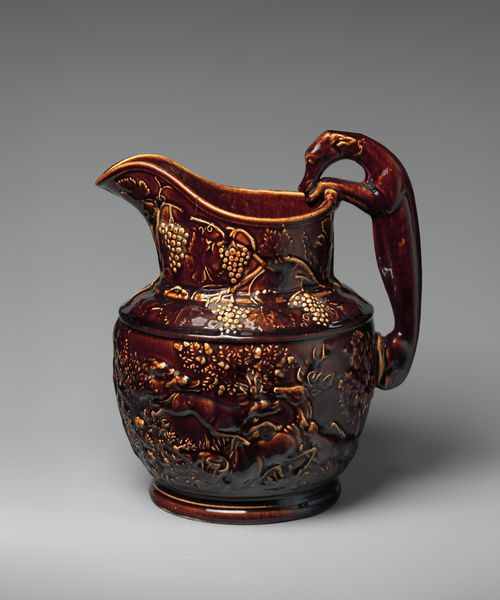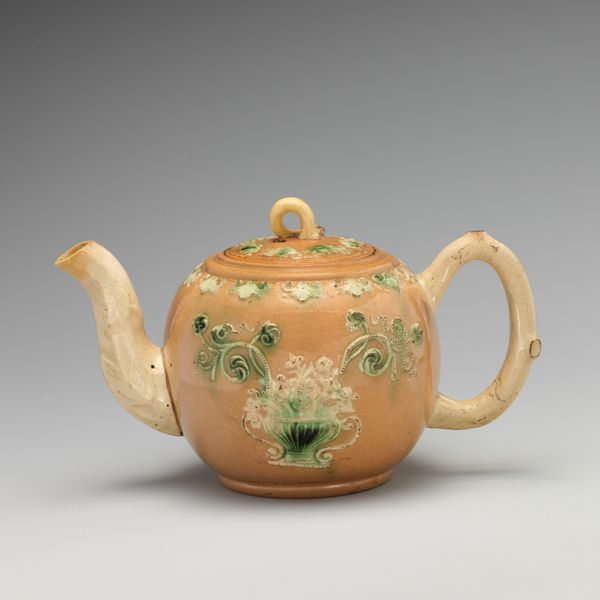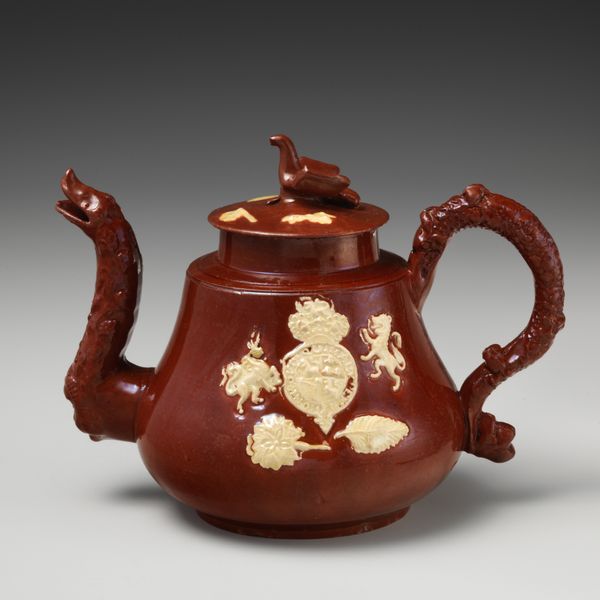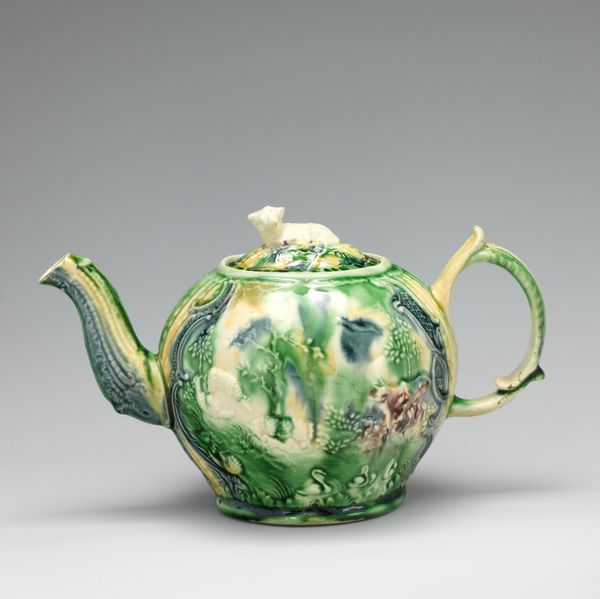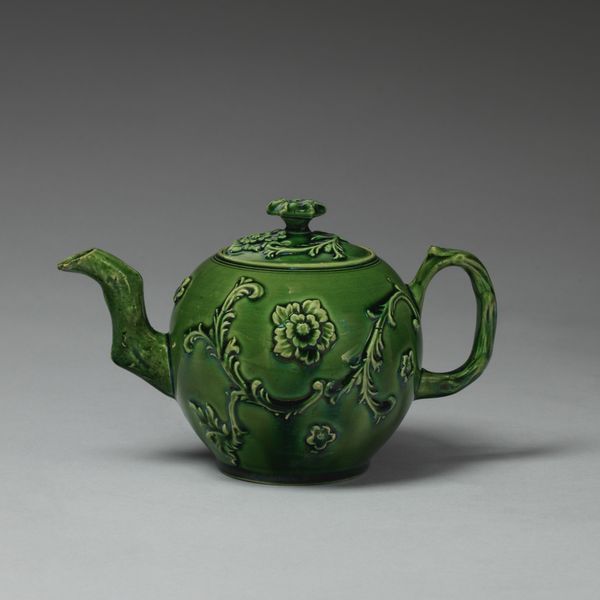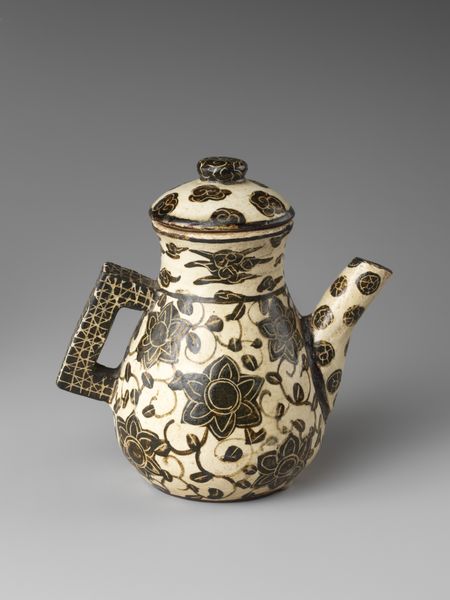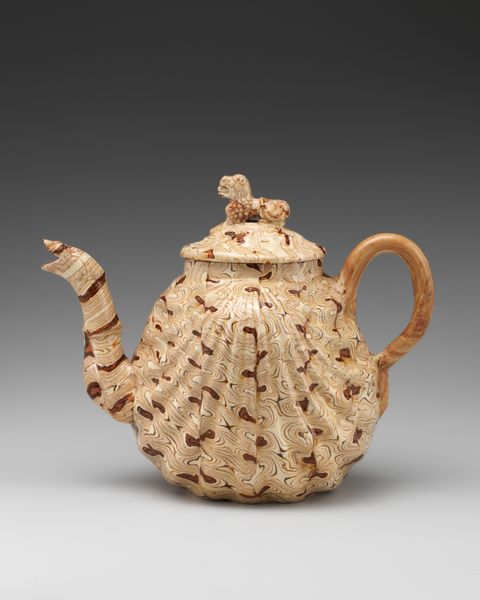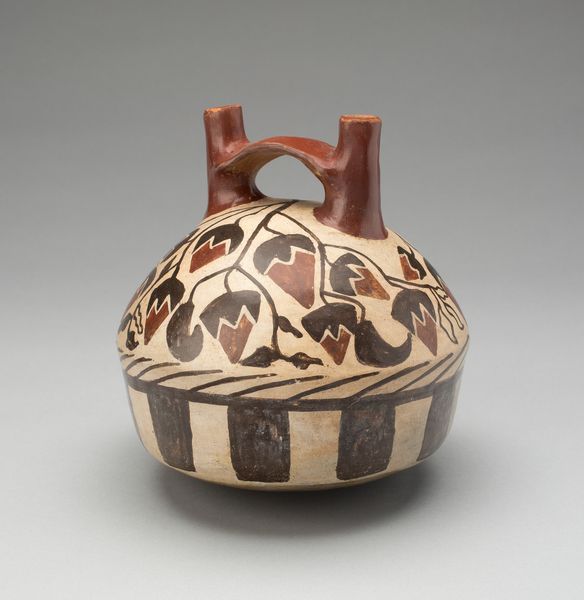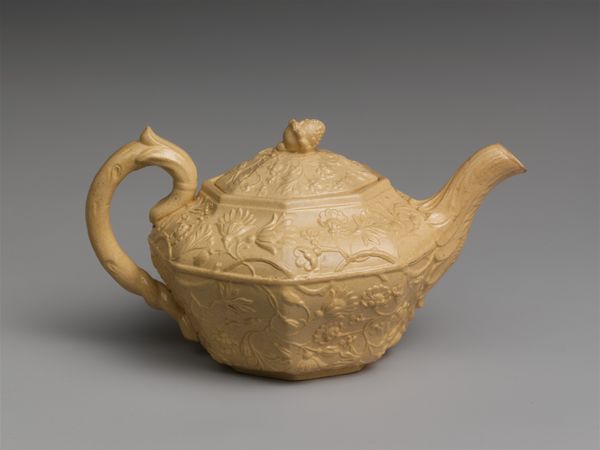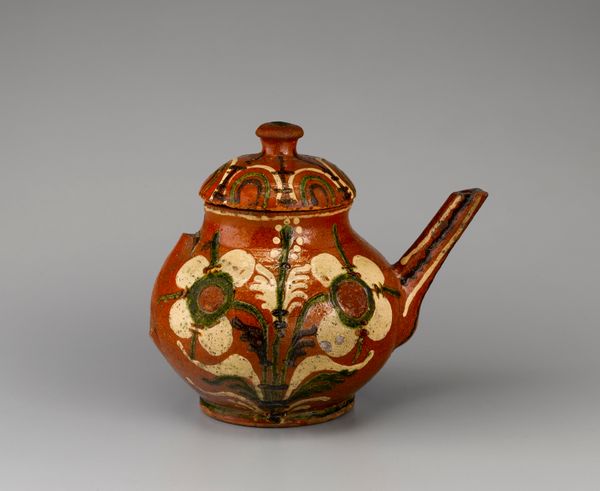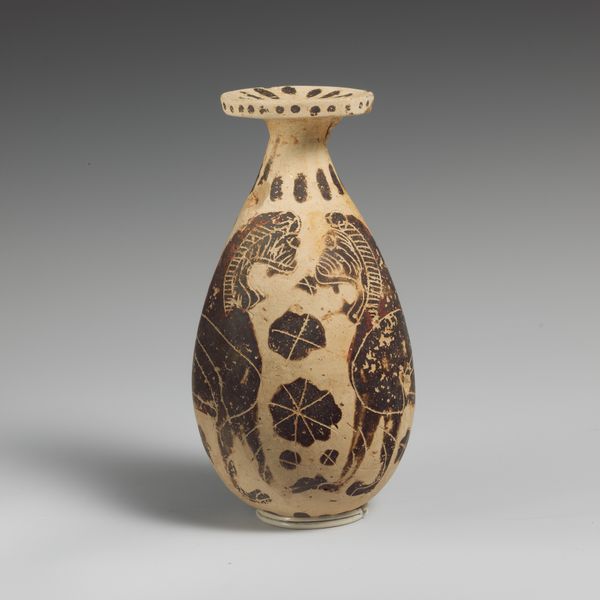
ceramic, sculpture
#
ceramic
#
folk-art
#
sculpture
#
decorative-art
Dimensions: Height: 4 3/8 in. (11.1 cm)
Copyright: Public Domain
Editor: So this is John Astbury’s Teapot, made around 1735-1745. It's a ceramic sculpture and belongs to the decorative arts. The contrast between the dark body and light relief is so striking! What do you see when you look at this piece? Curator: I see layers of cultural encoding. Notice how the grape vine motif isn't just decoration, it's loaded. Grapes historically symbolize abundance, fertility, but also sacrifice in some religious contexts, wouldn’t you agree? Editor: I hadn't thought of it that way. It seemed like a pretty, pastoral scene. Curator: Consider the period, though. This teapot emerges from a time when tea-drinking itself was a ritual steeped in social and political significance. The grape vine adds another layer— a subtle nod to indulgence, maybe even coded messaging within a rising merchant class. Do you think they’re consciously embedding these messages? Editor: It's fascinating to consider the vine as more than just decoration. I suppose luxury items often carry this sort of subliminal language. But did everyone at the time get the symbolism? Curator: Perhaps not overtly, but these symbols resonated within the culture. Think of it as a visual shorthand that speaks to shared values, aspiration, and belonging. The dark ceramic is such a deep ground for such a rich emblem. I’m also curious: Does this choice make you consider it a symbol of day or night? Of summer or fall? Editor: Hmm…the darkness, paired with ripe grapes, almost evokes the feeling of late autumn, a moment of abundance just before winter’s starkness. This has given me a lot to reflect on. Curator: Precisely! Art objects are always more than meets the eye, embedded with complex webs of meaning waiting to be unraveled.
Comments
No comments
Be the first to comment and join the conversation on the ultimate creative platform.
